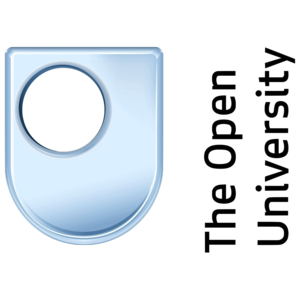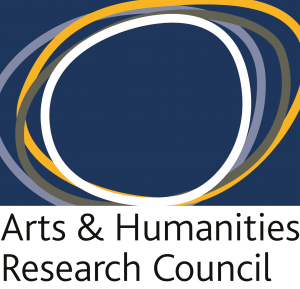Asset Mapping and Place-making
 The Glass-House Community Led Design is an independent national charity that supports and promotes a more collaborative approach to design in placemaking as a means to improving the quality of our places and spaces to live, work and play. We are rooted in community leadership and participation, collaborative and inclusive processes and good design.
The Glass-House Community Led Design is an independent national charity that supports and promotes a more collaborative approach to design in placemaking as a means to improving the quality of our places and spaces to live, work and play. We are rooted in community leadership and participation, collaborative and inclusive processes and good design.
Our approach helps to unearth latent potential in the people and the places with which we work and supports a more holistic approach to looking at place. We provide groups with the tools that will support them to achieve their goals and kick start their process of change or improvement.
We have developed a range of tools and techniques to support people to unearth, identify and mobilise assets that can help them in their design journey. We are committed to developing approaches that are engaging and collaborative, allowing people of all ages and abilities to participate and contribute. Different techniques are used based on the specific needs and abilities of a group and the individuals within it.
-
Some approaches include:
- Contextual mapping exercises that look at the physical place (and its surroundings) that a project is seeking to improve, perhaps with a thematic focus such as movement and transport, infrastructure and public services, to help identify where there are opportunities or issues. Used in our support to Fountainbridge Canalside Initiative in Edinburgh, these exercises help to bring together stakeholders to build an understanding of the qualities of a place and explore future opportunities for a neighbourhood.
- A ‘How is it working’ walkabout which helps people to start looking at and connect with their place in a different way and uncover how places work. This approach, which builds multiple layers of information about local assets while moving around a place, offers an informal and accessible approach to local asset mapping. This approach helped the village of Kirdford (http://www.theglasshouse.org.uk/projectshowcase/kirdford-community-led-plan/) in West Sussex to identify key issues around movement and transport and explore how simple improvements in the public realm infrastructure could be addressed in a community-led plan.
- Study Tours that take groups to similar projects from which they can extract learning and inspiration. During Study Tours participants are encouraged to map their reactions to what they are seeing and learning, talk to others participants and guides and share experiences, and build their aspirations for their own projects.
- Mapping potential partners and competitors, clients and beneficiaries in relation to the place they hope to transform. This is an essential part of both design brief development and business development to ensure the viability and sustainability of their project. It also helps identify partners and collaborators that will be valuable assets to their projects. As part of a visioning process for The Winchester Project in Swiss Cottage, we used asset mapping to link their physical assets to the needs of staff and beneficiaries in order to inform both a new business plan and the design brief for a refurbishment of their premises
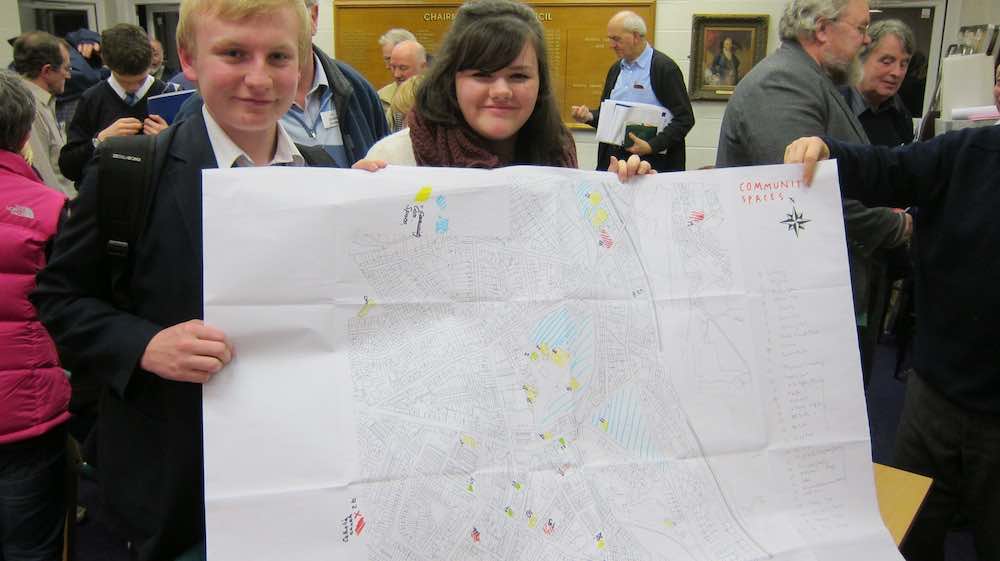
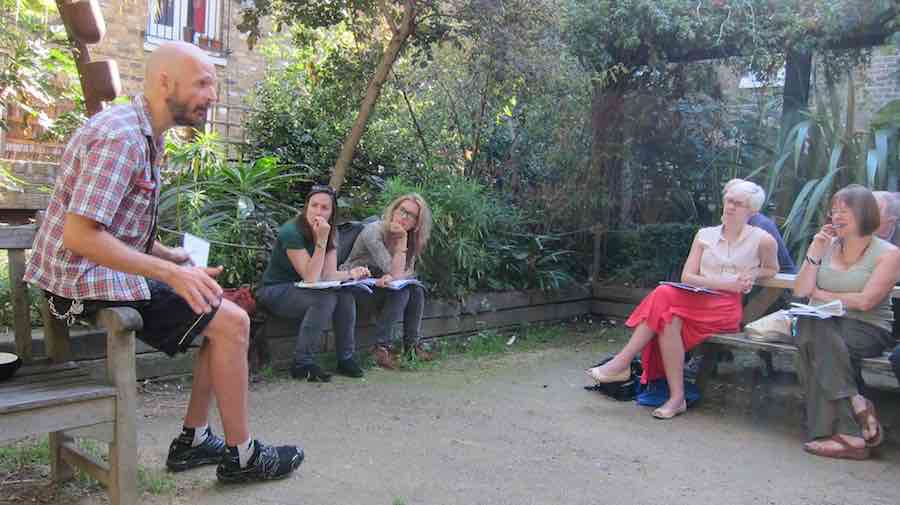
“I like how I get to learn and think about things in a new way.”
(Feedback from participant in an Open Spaces Study Tour in 2014).
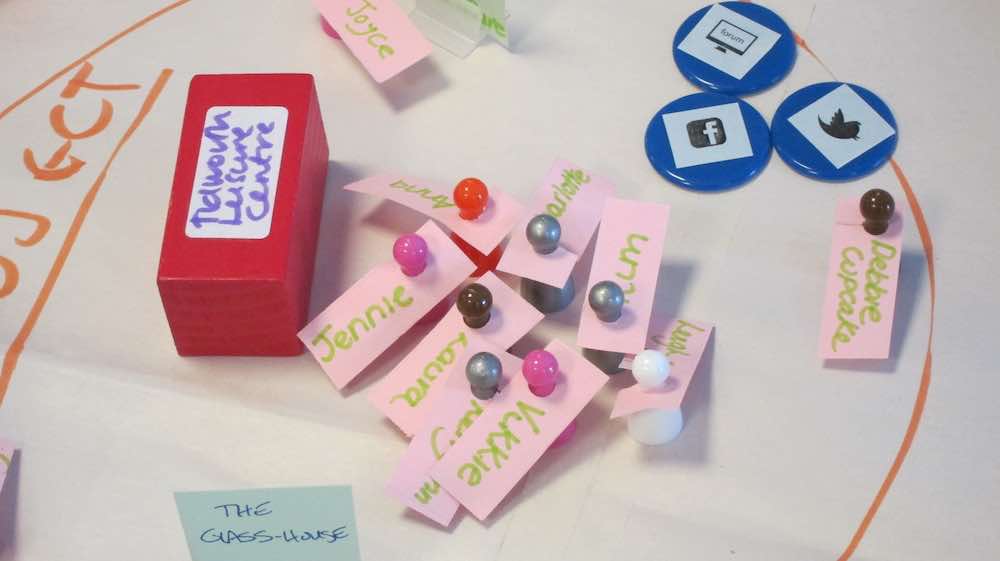
 The Glass-House is committed to innovation and building the evidence base for the value of a collaborative approach to placemaking and the impact of this enabling approach. We extract learning from our experiences, share stories and voices and develop educational resources that can be used by others in their placemaking journeys.
The Glass-House is committed to innovation and building the evidence base for the value of a collaborative approach to placemaking and the impact of this enabling approach. We extract learning from our experiences, share stories and voices and develop educational resources that can be used by others in their placemaking journeys.
Over the past four years, we have taken an active role in collaborative research with higher education institutions (including a strategic partnership with the Design Group at the Open University). This work has allowed us to test new approaches, extract replicable models and frameworks and develop resources that can be shared with a wider audience.
In the Unearth Hidden Assets through Community Co-Design and Co-Production project, The Glass-House and partners used existing asset mapping methodologies and developed new approaches to support the Tidworth Mums group to build a network of play stakeholders to back the case for soft play in Tidworth. An asset mapping exercise (drawn from a previous research project ‘Media, Community and the Creative Citizen’) asked participants to map what they consider as their current and potential assets under six categories – spaces, infrastructure, media, groups/organisations, individuals and other – on concentric circles according to their relative importance and/or accessibility. A Play Study Tour, Play Engagement Day and a business planning workshop all contributed to helping the group to widen the conversation about play in their area, build skills and confidence to help achieve their goals and test and develop their ideas with supporters and stakeholders. The project gave members of the groups “more confidence and the courage to believe that they could make a difference, and also provided tools and techniques to help us clarify our objectives and how to better realise them.”
Following the end of the project, we produced a ‘Tidworth Mums: A Case for Soft Play’ Resource Pack ( A5 Booklet Spreads & Tools ) which contains a set of tools and prompts that could support and inspire other groups who want to create playful environments in their neighbourhoods.
Asset-based approaches are not only valuable in direct support to placemaking projects but also in scaling up the impact of our work by cross pollinating with other organisations as happened through our participation in the Scaling up Co-Design collaborative research project. A process of ‘cross-pollination’ which saw partners explore how combining elements of their work with that of others could strengthen their own project, brought new resources and approaches to partners’ work and benefitted the communities we were supporting and our practices as organisations. This work has heightened our awareness of our assets, our networks and how these help us broaden our asset base and use those assets to greater effect.
Our work in this project also empowered those whom we supported to become ambassadors and enablers of co-design and of our practices. The Silent Cities’ Community Journalists who experienced a Glass-House workshop on place and then helped facilitate a workshop with young people with The Glass-House and Silent Cities, moved from the trainee to the trainer, and were empowered and enabled champions of what they had been taught.
We were keen to share this approach to asset mapping and cross-pollination, and to make it available to others. At the Scaling Up Co-Design Showcase event in May 2014, one of the participants described the approach as “transformational”, and said that she would like to introduce it to her practice. (more on this at theglasshouse.org.uk).
There is no doubt that asset mapping is an essential step in building awareness and confidence when moving projects and organisations forward. In our work as a support organisation, it is a valuable tool in helping the groups we support realise their aspirations and their potential. It has also been essential to us as an organisation, supporting our committed approach to collaborative working, but most importantly helping us to mobilise our assets, and to create new ones in order to help us help communities.









